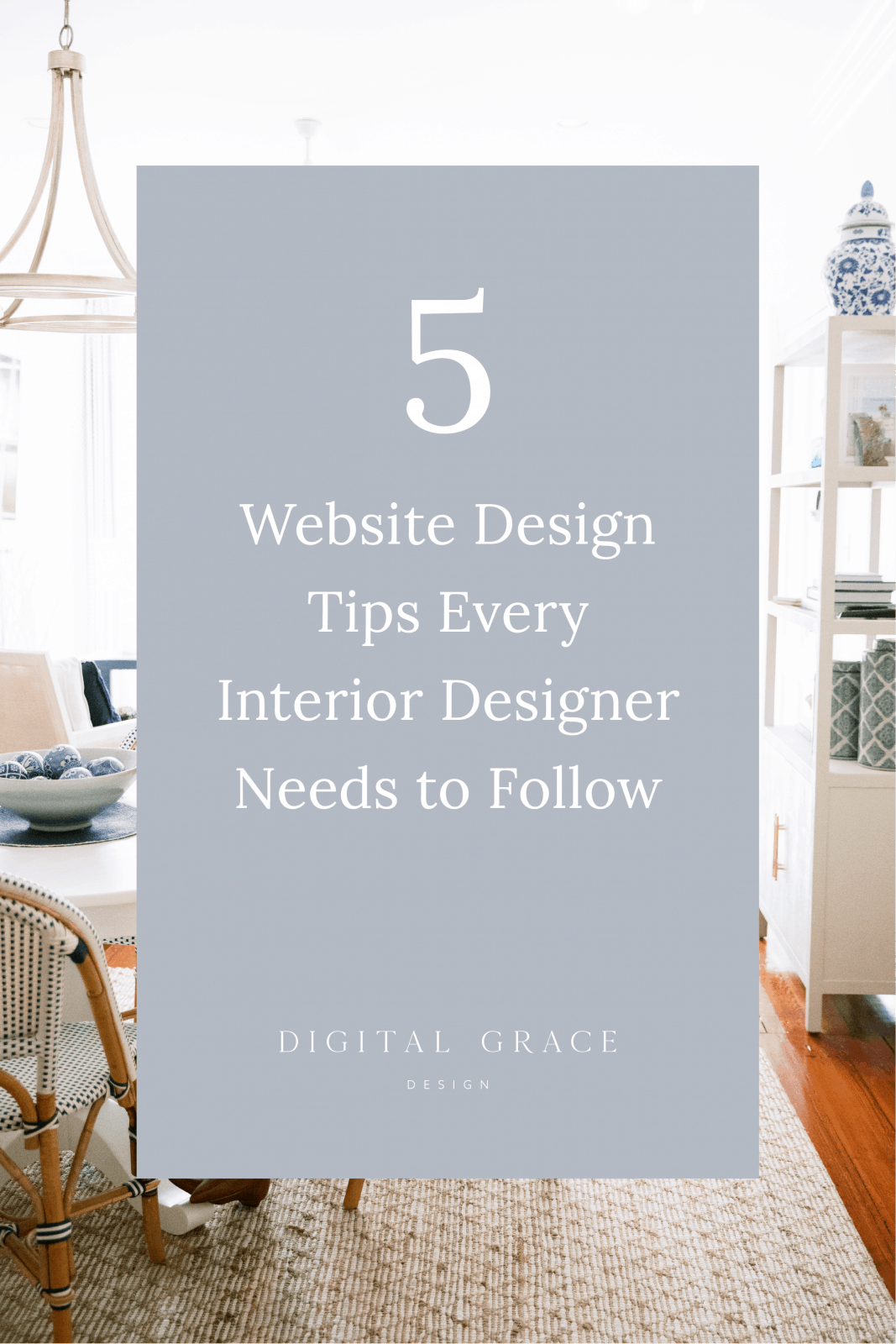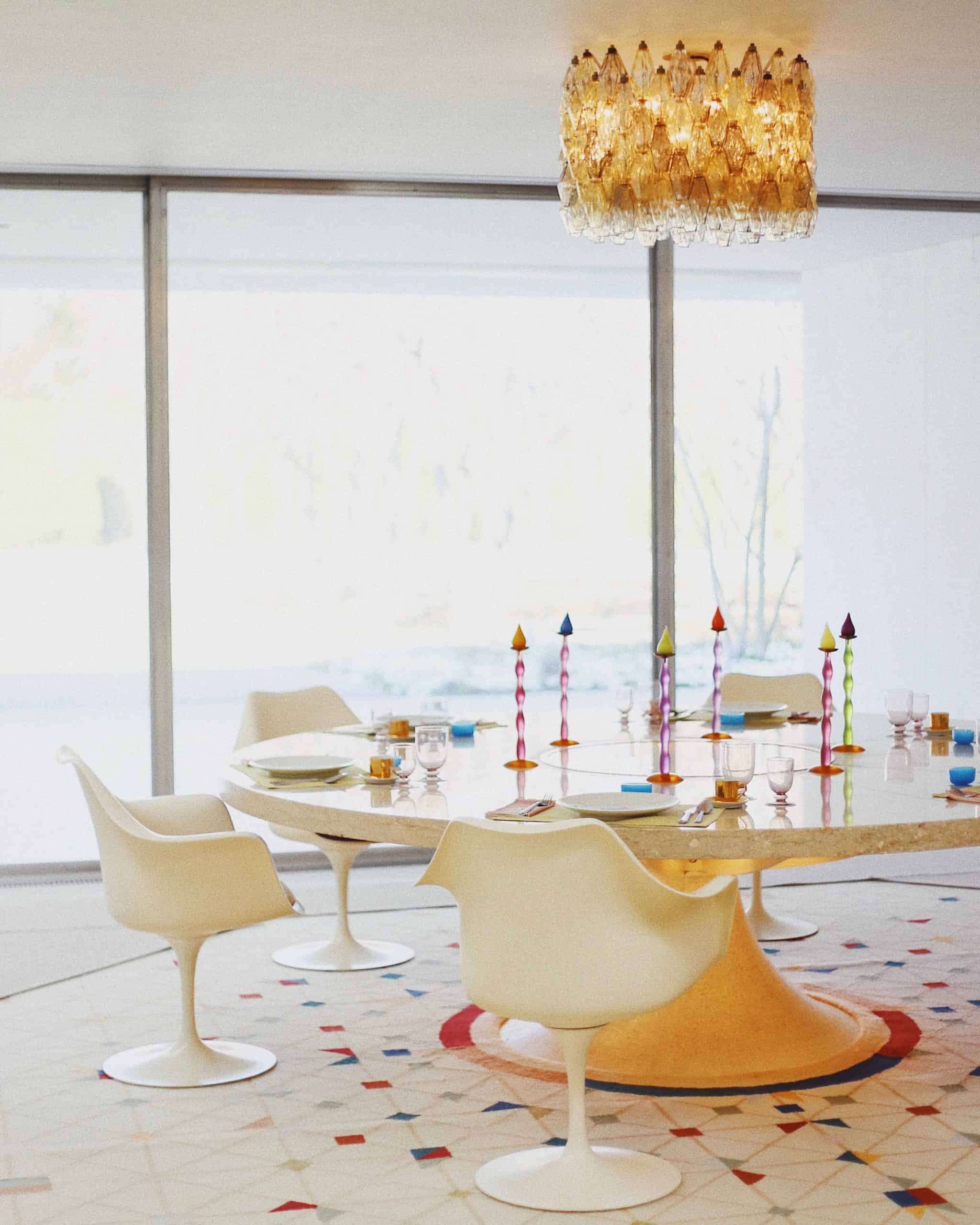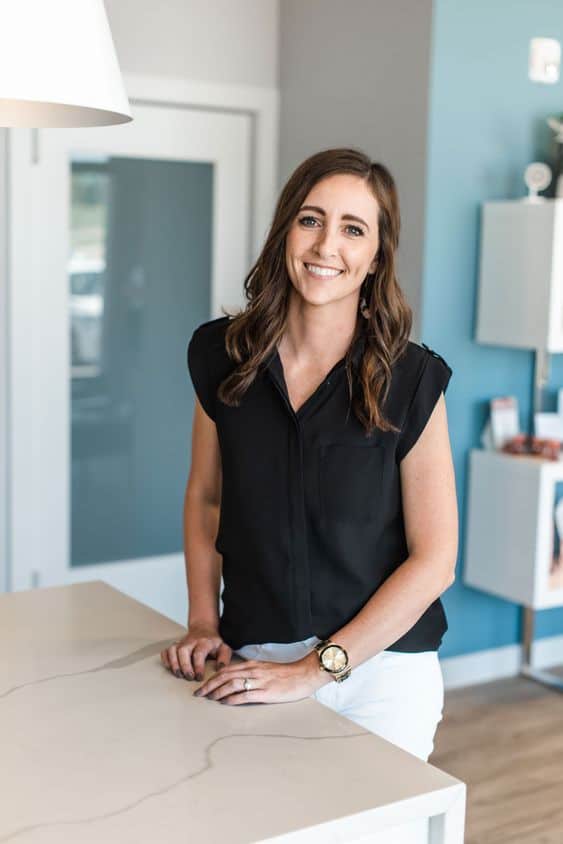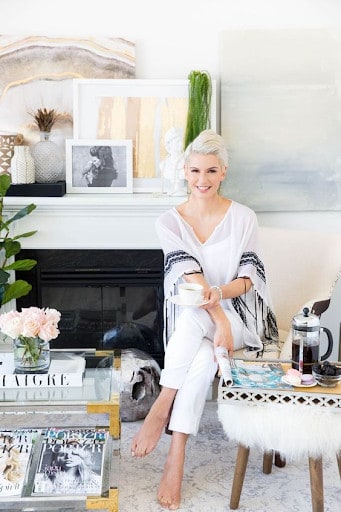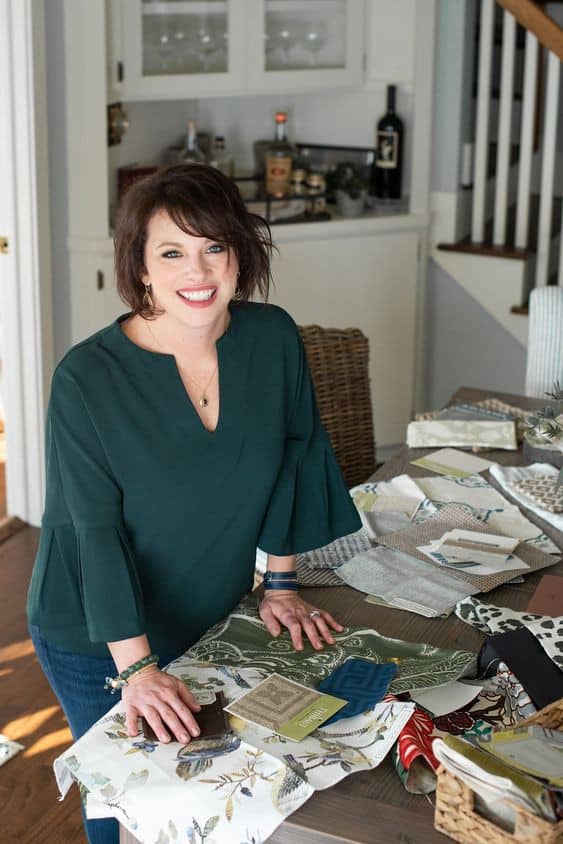As an interior designer, you need more than a visually stunning website to stand out.
Stunning visuals are absolutely a part of the equation, but you also need a website that is fully functional, easy to navigate, and generates the kind of results you’re aiming for.
No matter if you want to refresh your current website, are going through a rebrand, or starting completely from scratch, building a successful website starts with understanding your goals.
What are the financial goals behind your interior design business? How do you want to position your interior design business, and what do you want to be known for? How many interior design clients do you want to work with each year and at what price points?
All of these questions can help you move closer to what you really want to accomplish with your website. Once your goals are nailed down, you can go into the website building process with more confidence and ease.
When you’re ready to get started, let’s begin with five website design tips you’ll want to follow as an interior designer.
Web Design for Interior Designers
Design your website with an ideal client in mind
Before you choose a color palette, fonts, and start gathering imagery, it’s best to have an idea of who you want to attract with your website. Of course, you want your website to be as visually stunning as your interior design work, but it needs to be aligned with your ideal clients’ tastes.
Let’s say that mid-century modern is your interior style of choice with its sharp lines and frequent pops of vibrant colors. You gravitate toward these visual elements, but if you work with clients who love farmhouse-style decor, you might want to incorporate curves and patina into your design to make it feel more warm and welcoming.
Review your portfolio of work and pull inspiration from the visual elements you see. Are there patterns or textures you can use as background images for your website? Are there colors your clients like to gravitate toward?
If you aren’t sure who your ideal client is, you can complete this ideal client profile activity to ensure you can communicate who they are to your website designer. Remember that the decisions you make while designing your website are just as important as the ones you make when designing a new client’s interior. The same level of care must be taken.
Rethink your website navigation
From the moment a prospective client lands on your website, are they able to easily explore your website and find what they need? If not, it may be time to revisit your website navigation.
Your website navigation refers to the menu bar that is typically found at the top of your website. For a visual example, this is a screenshot of my own website navigation links for Digital Grace Design.
Most interior designers will have four or five navigation links on their website, depending on what their website goals are. Usually, they’ll highlight their Home, About, Services, Portfolio, and Contact pages.
If you have other website pages you’d like to show in your website navigation, there are two strategies you can follow.
One is to put multiple pages underneath a single page link, creating a dropdown menu feature. This is done so that a visitor can click a Services navigation link, for example, and see an additional menu of service pages they can explore.
The other option is to include the additional website pages to your footer. This is found at the very bottom of your website and can include any website pages you want visitors to easily access without needing to highlight them in the main website navigation.
If you aren’t sure about how you want to set up your website navigation or website structure, I recommend working with a website designer who can guide you through the whole website building process.
Introduce yourself with a bio
When someone hires you as their interior designer, they’re showing that they trust you enough to come into their house and help them transform it into a home. The process of interior design is very personal, which makes it even more important for you to introduce yourself on your website.
Many interior designers include bios on their websites, but sometimes it reads more like a professional resume than a personal introduction. While it’s great to list your accomplishments, you’ll also want to add a personal touch.
Inside your bio, you will likely include:
- Your formal education (if applicable)
- Any certifications you’ve earned
- Relevant experience in the industry
- Publications your work has been featured in
- What inspires you as an interior designer
- What you love most about collaborating with clients
- Who you specifically work with and why
- What services you specialize in
Here are a few interior design bio examples I really like.
(Psst… As a StoryBrand Certified Guide, I can help you refine your bio when we design your website so everything fits seamlessly together. Learn more about my services here.)
Add a professional portrait
In addition to writing your bio, you’ll also want to include a professional headshot. I recommend working with a brand photographer so you’ll have a variety of headshots to choose from. It also makes it easier for your website designer to incorporate multiple photos throughout your website for a consistent and cohesive look.
Your brand photographer can capture an image of you in one of your favorite homes (with your client’s permission) or in a location that matches your interior design style.
Most interior designers choose a vertical portrait of themselves looking directly at the camera with a warm smile. This shows potential clients that you are approachable and friendly while your posture and outfit make you look professional and polished. Read more about quality brand photography tips here.
Include a portfolio of your best interior design work
To make sure you are the perfect fit, a potential client will be assessing your work portfolio. By doing so, they can determine if they gravitate toward similar design styles and your overall approach to interior design.
When selecting projects for your portfolio, try to choose quality over quantity. You might be tempted to show the broad range of your work, but I recommend keeping it simple. Showcasing somewhere between five and ten interior design projects is usually the sweet spot.
Many interior designers only include a few professional images of interior rooms they’ve designed, but I recommend taking it a step further by giving a behind-the-scenes look into the project. You can do this by crafting a memorable story about each project.
Think about how much more impactful it would be to read about the reasonings and motivations behind each design choice. That stands out more than an image gallery with no context.
Interior design is all about the details, so writing a personal story for each interior will show the true value of your work. These stories can also bring your work to life by giving potential clients a taste of what it’s like to work through your process.
While a picture can be worth a thousand words, weaving in the magic of storytelling through your website copywriting will help you make a stronger emotional connection with your potential clients.
Why I recommend Showit as a website designer for interior designers
I’m just going to come right out and say it. There is no better website platform for interior designers than Showit! Trust me, I’ve tried them all.
Built for visual artists, Showit gives you ample space to show off your beautiful interior design imagery that looks beautiful on any device. It also takes the tech headaches out of the equation with its drag-and-drop features and no-code website builder.
You won’t just have a website that looks pretty. It will also be powerful when we build your website using Showit.
Interested in learning more about Showit? After you read why I use Showit to build my client websites, you can schedule a free discovery call with me to talk about if it’s the right fit for your interior design business.
